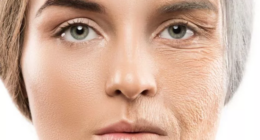Breastfeeding is a must :-There are a lot of reasons why you should breastfeed your baby. It’s not just about providing them with the best nutrition possible, but also about bonding with your child and giving them the best start in life. If you’re on the fence about whether or not to breastfeed, here are seven major facts that might sway you. From the health benefits to the economic ones, there are plenty of reasons to give breastfeeding a try.

The History of Breastfeeding
1. The History of Breastfeeding:
The act of breastfeeding is one that has been around for centuries, with evidence of its practice dating back as early as 1550 BC. In those early days, wet nurses were often used to feed infants whose mothers were unable or unwilling to do so themselves. However, the use of wet nurses eventually fell out of favor and was replaced by the more common practice of bottle feeding.
It wasn’t until the late 19th century that breastfeeding began to make a comeback. This was thanks in large part to the work of Dr. Edward Livingston Trudeau, who founded the Adirondack Cottage Sanitarium in Saranac Lake, New York. At this facility, Dr. Trudeau treated patients with tuberculosis using a combination of fresh air, rest, and good nutrition—all of which could be provided by breastfeeding. As word of his success spread, other physicians began to advocate for the use of breastfeeding as well.
By the early 20th century, more and more women were choosing to breastfeed their infants. This trend was likely spurred on by the publication of “The Wisdom of Mother Nature” in 1920, which extolled the many benefits of breastfeeding. These same benefits are still promoted today, and include improved bonding between mother and child, decreased risk of certain illnesses and infections, and better nutrition for babies.
The Benefits of Breastfeeding
There are many benefits to breastfeeding for both mother and child. Breastfeeding can help the mother to bond with her baby, and it can help the baby to get the nutrients they need. Breast milk is easy for babies to digest and is full of antibodies that can help protect them from illnesses. Breastfeeding can also help to improve the mother’s health, and it can save the family money on formula and other costs associated with bottle-feeding.
The Different Types of Breastmilk
There are three different types of breastmilk that can be produced by mothers. The first type is known as colostrum, which is a yellowish liquid that is produced during the first few days after childbirth. Colostrum is high in immunoglobulins, which are antibodies that help protect the newborn from infection. The second type of breastmilk is known as transitional milk, which is produced during the first few weeks after childbirth. Transitional milk is higher in fat and calories than colostrum, and helps the newborn baby gain weight. The third and final type of breastmilk is known as mature milk, which is produced after the transitional period. Mature milk has a higher concentration of lactose and fat than colostrum or transitional milk, and provides the majority of the nutrients that a growing baby needs.
How to Breastfeed
1. How to Breastfeed
Most experts recommend that you breastfeed your baby for at least the first year of life. Here are some tips on how to get started:
• Choose a comfortable position. You can sit in a chair or lie down on your side. Place a pillow behind your back for support.
• Hold your baby close to your body. His or her head should be level with your nipple.
• Use a pillow to support your arm and elbow. This will help you hold your baby in the correct position and avoid strain on your arm.
• Gently touch your baby’s lips with your nipple. When he or she opens his or her mouth wide, bring him or her quickly to your breast. His or her chin should be touching your breast, and his or her nose should be free so that he or she can breathe easily.
• Apply pressure to your breast with your thumb and forefinger behind the areola (the dark area around the nipple). This will help express milk from the ducts and into the baby’s mouth.
Breastfeeding in Public
Breastfeeding in public can be a daunting experience for many new mothers. However, it is important to remember that you are not alone. There are many other mothers out there who have breastfed in public and who can offer support and advice.
There are also many resources available to help you feel more comfortable breastfeeding in public. The following are some tips for breastfeeding in public:
1. Find a comfortable place to breastfeed. This may be a quiet corner in a restaurant or park, or a secluded spot in your home.
2. Use a nursing cover if you feel self-conscious about breastfeeding in public. This will help you feel more comfortable and will keep your baby warm and protected.
3. Dress comfortably for breastfeeding. Wear loose-fitting clothes that allow easy access to your breasts.
4. Be prepared with snacks and drinks for yourself and your baby. This will help you stay relaxed and focused on breastfeeding.
5. Practice at home before venturing out into public places. This will help you feel more confident about breastfeeding in front of others.
FAQ’s about breastfeeding
1. Breastfeeding is beneficial for both the mother and baby.
2. It helps reduce the risk of disease and infection for the baby.
3. Breast milk is easy to digest and is packed with nutrients that are essential for the baby’s growth and development.
4. It also helps build up a bond between mother and child.
5. Breastfeeding is convenient as it does not require any preparation or special equipment.
Hygiene While Breastfeeding
“1. Hygiene While Breastfeeding
One of the most important things to consider while breastfeeding is hygiene. It is important to keep your breasts clean and dry to prevent infection. There are a few ways to do this:
-Wash your breasts with warm water and soap before each feeding.
-Use a nipple shield when necessary (Many mothers find that using a nipple shield helps keep their nipples clean and dry.)
-Change your breast pads often, especially if they become wet.
-Avoid using lotions or creams on your nipples, as this can increase the risk of infection.”
Conclusion
In conclusion, there are many benefits to breastfeeding for both the mother and child. Breastfeeding can help the mother bond with her child, and it can also help the child develop a healthy immune system. Additionally, breastfeeding can help to reduce the risk of obesity and other chronic diseases.







